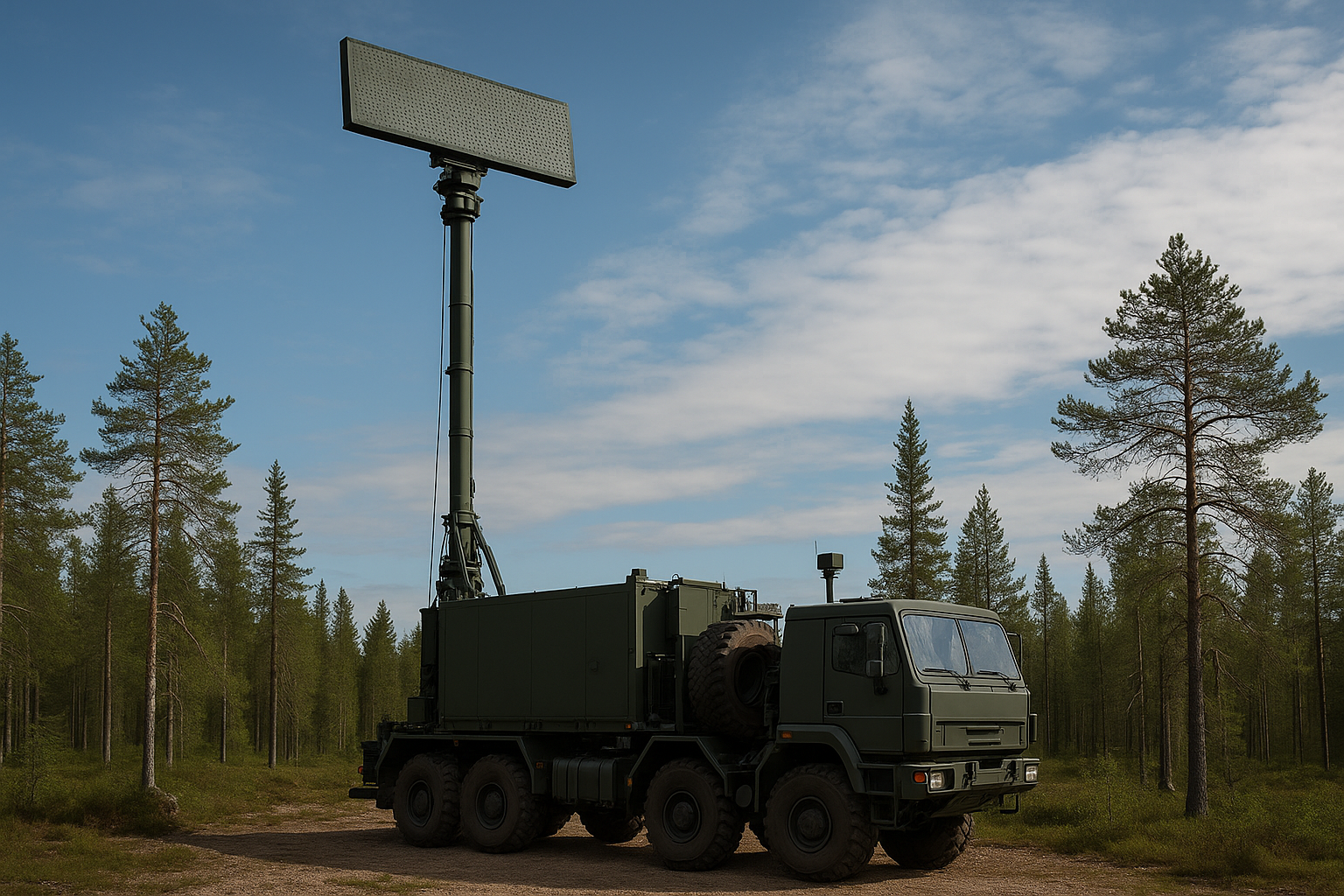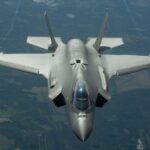Finland has decided to keep its backbone air-surveillance radars in shape for another five years. Finland’s ongoing focus on Finnish special forces restructuring underscores broader trends in national defence modernization. Defence Minister Jussi Niinistö authorized the Defence Forces Logistics Command to sign an extension with Thales LAS France S.A.S. The framework sets a spending ceiling of €20 million between 2018 and 2023. It covers both the long-range system bought in 1988 and the medium-range set that entered service in 2009.
The long-range network watches high-altitude traffic far beyond Finland’s borders in an arrangement defined by a long‑range and medium‑range radar maintenance extension deal covering €20 million from 2018 to 2023. Each S-band array scans out to about 450 kilometres and tracks aircraft above 100,000 feet. Operators rely on digital beam steering to sharpen plots in bad weather. Medium-range units close the low-level gap. Mounted on 8×8 trucks, they can move within hours, roll up a mast, and paint targets flying beneath forest canopies.
Thales Radar Systems in Finnish Air Surveillance
Radar data flows through fiber links to three Control and Reporting Centres. When an antenna drops offline for ten minutes, risk models show a four-percent rise in untracked crossings along Finland’s eastern frontier. The new deal sets a 98-percent availability target and ties vendor bonuses to that metric.
Work shares stay local. Millog Oy handles depot repairs at Riihimäki, and Patria’s electronics shop in Tampere reworks circuit cards. The ministry expects 60 person-years of domestic labour as line-replaceable units rotate for overhaul. Thales will stock fast-moving spares inside Finland instead of shipping from France, cutting delivery time from six days to one.
The contract’s scope is broad: preventive and corrective maintenance, two annual software drops, cyber-security patches, and refresher courses for radar crews. Finland also aligns with broader digital defense trends seen in the joint cyber dome initiative between Germany and Israel. Thales must dispatch a field team within 24 hours when local technicians hit a dead end. A service-credit scheme claws back fees if uptime dips below ninety-six percent; extra cash goes to the firm if the figure tops ninety-nine.
Localized Support and Workforce Benefits from Radar Maintenance
Finland’s twelve fixed long-range sites are vital because the country fields only sixteen surveillance nodes across 338,000 square kilometres. Every outage creates a hole large enough for a cruise missile or drone to slip through. Planners therefore schedule heavy maintenance for July, when civil air traffic is light and fighter alert rates drop.
Radar performance matters beyond Finland. Estonia operates the same medium-range model and shares spares through a joint pool. Operators in Tallinn and Jyväskylä swap tracks on a secure link when Russian aircraft skirt the Gulf of Finland. The cross-border picture lets both nations cue interceptors without delay.
Technicians track hardware life closely. Structural parts show less than one-third of their fatigue allowance, and transmitter modules rotate back to the factory every eight years. That evidence pushed Helsinki toward refurbishment instead of new builds. The extension also reserves €4 million for optional upgrades such as gallium-nitride front ends or machine-learning clutter filters if those technologies mature before 2023.
A typical radar shift runs with three people: a system controller, a maintenance specialist, and an identification officer. Thales instructors give a four-week refresher each spring. Lessons cover fast fault isolation, secure link configuration, and jamming counter-moves. Graduates earn credits that count toward civilian air-traffic licenses, widening career paths.
Finland Radar Network Evolution and Refurbishment Plans
Finland’s radar journey started in 1988 when it bought twelve TRS 2215D arrays. The 1990s saw a jump to digital signal processing. In 2009 the Air Force added Ground Master 403 sets to improve coverage in the north. Remote monitoring from Jyväskylä began in 2012. The present deal keeps that chain alive through 2023 and gives planners breathing room to study next-generation sensors.
Costs peak in 2021–2022 when spare demand is highest, then taper off as refurbished modules return. Finance staff treat the contract as a life-cycle bridge to the mid-2030s. Officials say no radar replacement plan will go to Parliament before 2027 at the earliest.
Finland’s geography makes early warning indispensable. The country sits under a polar corridor used by Russian, Chinese, and occasionally U.S. bombers. Long-range radars tip and cue NATO assets flying further west. During Baltic Air Policing drills last spring, Finnish plots reached E-3A crews ten seconds faster than Swedish feeds, giving fighters extra time to react.
Extended Radar Coverage Supporting NATO and Regional Air Security
Civil agencies also lean on the network. Air-navigation provider Fintraffic taps radar returns during volcanic-ash events and major search-and-rescue cases over the Gulf of Bothnia. Under the new deal, Thales will certify a filtered civil feed that masks military tracks yet meets Eurocontrol latency targets.
Environmental resilience remains a focus. Antenna radomes near Sodankylä face ice loads of seventy kilograms per square metre in deep winter. Engineers plan to test a new de-icing film next January. The coating draws far less power than current heating grids and should free capacity for other base-support loads.
Cyber defence has grown sharply since the last contract. Each radar now hosts an intrusion-detection agent that reports to the Defence Cyber Centre in Pori. The 2020 software baseline added sandboxing to block malicious code delivered by maintenance laptops. Under the extension, Thales must patch vulnerabilities within five working days of detection.
Looking back, Finland’s decision to buy transportable mid-range sensors in 2009 proved timely. Mobile antennas moved south in 2014 when Russian aircraft increased probe flights along the Baltic seam. Operators could then push coverage exactly where gaps appeared, cutting scramble times by fifteen percent.
Logistics Command will monitor contract health through a real-time dashboard that streams built-in-test data from every site. The screen flags performance dips, logs spare-part lead times, and tracks response hours for each repair call. Officials claim the tool cut administrative email traffic by half during pilot runs last autumn.
Upgrade paths stay open. Engineers are studying passive-coherent receiver add-ons that harvest FM radio reflections to spot stealth targets. If trials succeed, antennas could bolt onto the existing towers without new concrete. Funding for a prototype enters the 2021 defence budget.
The deal’s economic angle is modest but steady. Radars are niche, yet the overhaul line sustains high-skill jobs, from microwave engineers to software testers. The ministry estimates each euro spent on in-country maintenance returns €1.30 in wages and taxes, a ratio higher than most conventional arms buys.
Longer term, planners see a layered sensor web that blends space-based data, passive arrays, and the refreshed S-band fleet. They argue that a balanced mix beats a single expensive system by offering redundancy against cyber or kinetic attack.
By locking in support through 2023, Helsinki avoids a capability dip while NATO air-defence integration deepens. Commanders can focus on doctrine and pilot training instead of firefighting hardware issues.
Finland-NATO Radar Synchronization and Capability Extension – MARCH 2025 UPDATE
The original contract closed on schedule in December 2023 after logging 98.7 percent availability, meaning radar availability exceeded target levels during the entire period. Finland then entered NATO Integrated Air and Missile Defence in January 2024, and the same radars now push live plots to the Combined Air Operations Centre in Uedem. Lapland controllers share tracks with E-3A crews during Baltic patrol sorties, shaving seconds off target hand-over.
Russia’s full-scale war in Ukraine changed the threat menu. Drones and low-flying cruise missiles now worry planners more than high-altitude bombers. In response, the Defence Forces ordered a mid-life electronics refresh last summer. Thales rolled out its ABSOLU support model that promises a thirty-percent faster turn-round for failed modules. An adaptation letter signed in February 2025 folds Finland into a wider European repair-hub network.
Software took the biggest leap. Since April 2024 every sensor streams raw plots into NATO’s cloud-based fusion engine. Machine-learning filters strip ground clutter and flag small drones that once hid below the noise floor. Analysts keep two weeks of Finnish data online, giving them a rich baseline for pattern-of-life work.
Operational tempo is up. During Exercise Hanki 24, mobile mid-range sets deployed onto frozen highways near Rovaniemi. They ran through nights colder than minus thirty without heater trouble, a first for the fleet. The long-range network helped cue departing Hornets as they climbed for short-strip drills, reducing briefing time by a quarter.
Finland’s debut NATO air-shielding mission in Romania last summer leaned on the home radar net. Long-range antennas tracked departing fighters all the way to Latvian airspace, ensuring continuous situational awareness.
Industry shifted too. Patria began building an F-35 assembly hall at Nokia that will tap updated radar feeds to test stealth-mode data links on production jets. Domestic suppliers expect steady work rewiring antenna cabinets for gallium-nitride transmitters once the option funding unlocks.
The Defence Forces outline three priorities for 2025–2028:
- Replace six ageing TRS 2215D arrays with GaN-based Ground Master 400 α units if Parliament releases funds next year.
- Feed down-converted radar data into NATO’s Aquila space-surveillance project, giving Finland a stake in the wider sensor web from 2026 onward.
- Expand predictive maintenance trials in Tampere; early logs show a fifteen-percent drop in surprise outages when AI flags weak power-amplifier chains before they fail.
Officials will not set a retirement date for the current fleet until those projects mature, but they hint the refreshed antennas can guard Finnish skies well into the late 2030s.
REFERENCE SOURCES:
- https://www.thalesgroup.com/en/countries/europe/thales-finland
- https://www.defmin.fi/en/topical/press_releases_and_news/press_release_archive/2018/agreement_on_maintenance_of_long-range_and_medium-range_surveillance_radars_extended.9383.news#9c4a7871
- https://ac.nato.int/archive/2024/CAOC_U_coordination_CRCs
- https://www.defensenews.com/global/europe/2024/03/01/finland-approves-construction-of-patrias-f-35-assembly-facility/
- https://ilmavoimat.fi/en/-/hanki-24-exercise-to-close-norvatie-in-rovaniemi-on-28.2.-1.3.2024
- https://nato.int/cps/en/natohq/topics_48892.htm
- https://defensenews.com/global/europe/2024/03/01/finland-approves-patria-f35-assembly-facility
- https://ilmavoimat.fi/en/hanki-24-exercise
- https://www.wilsoncenter.org/article/finlands-remarkable-first-year-nato
- https://www.nato.int/cps/en/natohq/topics_49594.htm



